Improving the False Alarm Capability of the Extended Maximum Average Correlation Height Filter
Abstract
:1. Introduction
2. Principle
2.1. Maximum Average Correlation Height Filter
2.2. Extended Maximum Average Correlation Filter
2.3. Wavelet-Modified EMACH Filter
3. Simulation Results
4. Performance Study
4.1. Peak-to-Correlation Energy
4.2. Peak-to-Sidelobe Ratio
4.3. Signal-to-Noise Ratio
4.4. Discrimination Ratio
5. Experimental Results
6. Discussion
7. Conclusions
Author Contributions
Funding
Conflicts of Interest
References
- Javidi, B.; Horner, J.L. Real-Time Optical Information Processing; Elsevier Science: Amsterdam, The Netherlands, 2012. [Google Scholar]
- Yu, F.T.S.; Jutamulia, S. Optical Pattern Recognition; Cambridge University Press: Cambridge, UK, 1998. [Google Scholar]
- Kumar, B.V.K.V.; Mahalanobis, A.; Juday, R.D. Correlation Pattern Recognition; Cambridge University Press: Cambridge, UK, 2005. [Google Scholar]
- Kumar, B.V.K.V.; Savvides, M.; Xie, C.; Venkataramani, K.; Thornton, J.; Mahalanobis, A. Biometric verification with correlation filters. Appl. Opt. 2004, 43, 391–402. [Google Scholar] [CrossRef] [PubMed]
- Kumar, B.V.K.V.; Savvides, M.; Xie, C. Correlation pattern recognition for face recognition. Proc. IEEE 2006, 94, 1963–1976. [Google Scholar] [CrossRef]
- Wang, Q.; AlFalou, A.; Brosseau, C. New perspectives in face correlation research: A tutorial. Adv. Opt. Photon. 2017, 9, 1–78. [Google Scholar] [CrossRef]
- Thornton, J.; Savvides, M.; Kumar, B.V.K.V. A bayesian approach to deformed pattern matching of iris images. IEEE Trans. Pattern Anal. Mach. Intell. 2007, 29, 596–606. [Google Scholar] [CrossRef]
- Fernandez, J.A.; Kumar, B.V.K.V. Space-time correlation filters for human action detection. Proc. IS&T/SPIE Electron. Imag. Video Surveill. Transport. Imag. Appl. 2013, 8663, 27–41. [Google Scholar] [CrossRef]
- Goodman, J.W. Introduction to Fourier Optics; Roberts and Company Publishers: Greenwood Village, CO, USA, 2005. [Google Scholar]
- Munshi, S.; Beri, V.K.; Gupta, A.K. Hybrid digital-optical correlation employing a chirp-encoded simulated-annealing-based rotation-invariant and distortion-tolerant filter. Appl. Opt. 2007, 46, 4304–4319. [Google Scholar] [CrossRef]
- Gupta, A.K.; Nishchal, N.K.; Beri, V.K. A hybrid digital-optical correlator for automatic target recognition. Proc. SPIE 2007, 6574, 657406. [Google Scholar] [CrossRef]
- Mahalanobis, A.; Kumar, B.V.K.V.; Casasent, D. Minimum average correlation energy filters. Appl. Opt. 1987, 26, 3633–3640. [Google Scholar] [CrossRef]
- Mahalanobis, A.; Kumar, B.V.K.V.; Song, S.; Sims, S.R.F.; Epperson, J.F. Unconstrained correlation filters. Appl. Opt. 1994, 33, 3751–3759. [Google Scholar] [CrossRef]
- Mahalanobis, A.; Kumar, B.V.K.V. Optimality of the maximum average correlation height filter for detection of targets in noise. Opt. Eng. 1997, 36, 2642–2648. [Google Scholar] [CrossRef]
- Nevel, A.V.; Mahalanobis, A. Comparative study of maximum average correlation height filter variants using ladar imagery. Opt. Eng. 2003, 42, 541–550. [Google Scholar] [CrossRef]
- Alkanhal, M.; Kumar, B.V.K.V.; Mahalanobis, A. Improving the false alarm capabilities of the maximum average correlation height correlation filter. Opt. Eng. 2000, 39, 1133–1141. [Google Scholar] [CrossRef]
- Kumar, B.V.K.V.; Alkanhal, M. Eigen-extended maximum average correlation height (EEMACH) filters for automatic target recognition. Proc. SPIE 2001, 4379, 424–431. [Google Scholar] [CrossRef]
- Goyal, S.; Nishchal, N.K.; Beri, V.K.; Gupta, A.K. Wavelet-modified maximum average correlation height filter for rotation invariance that uses chirp encoding in a hybrid digital-optical correlator. Appl. Opt. 2006, 45, 4850–4857. [Google Scholar] [CrossRef] [PubMed]
- Goyal, S.; Nishchal, N.K.; Beri, V.K.; Gupta, A.K. Wavelet-modified maximum average correlation height filter for out-of-plane rotation invariance. Optik 2009, 120, 62–67. [Google Scholar] [CrossRef]
- Aran, A.; Nishchal, N.K.; Beri, V.K.; Gupta, A.K. Log-polar transform-based wavelet-modified maximum average correlation height filter for distortion invariance in a hybrid digital-optical correlator. Appl. Opt. 2007, 46, 7970–7977. [Google Scholar] [CrossRef]
- Aran, A.; Nishchal, N.K.; Beri, V.K.; Gupta, A.K. Log-polar transform-based wavelet-modified maximum average correlation height filter for distortion-invariant target recognition. Opt. Lasers Eng. 2008, 46, 34–41. [Google Scholar] [CrossRef]
- Rehman, S.; Bilal, A.; Javed, Y.; Amin, S.; Young, R. Logarithmically pre-processed EMACH filter for enhanced performance in target recognition. Arab. J. Sci. Eng. 2013, 38, 3005–3017. [Google Scholar] [CrossRef]
- Rodriguez, A.; Boddeti, V.N.; Kumar, B.V.K.V.; Mahalanobis, A. Maximum margin correlation filter: A new approach for localization and classification. IEEE Trans. Image Process. 2012, 22, 631–643. [Google Scholar] [CrossRef]
- Hester, C.F.; Casasent, D. Multivariant technique for multiclass pattern recognition. Appl. Opt. 1980, 19, 1758–1761. [Google Scholar] [CrossRef]
- Kumar, B.V.K.V. Tutorial survey of composite filter designs for optical correlators. Appl. Opt. 1992, 31, 4773–4801. [Google Scholar] [CrossRef] [PubMed]
- Kerekes, R.A.; Kumar, B.V.K.V. Selecting a composite correlation filter design: A survey and comparative study. Opt. Eng. 2008, 47, 067202. [Google Scholar] [CrossRef]
- Fisher, J.W., III; Principe, J.C. Recent advances to nonlinear minimum average correlation energy filters. Opt. Eng. 1997, 36, 2697–2709. [Google Scholar] [CrossRef]
- Gardezi, A.; Birch, P.; Kypraios, I.; Young, R.; Chatwin, C. Implementation of the maximum average correlation height (MACH) filter in the spatial domain for object recognition from clutter backgrounds. Proc. SPIE 2010, 7696, 568–576. [Google Scholar] [CrossRef]
- Sadjadi, F.A.; Mahalanobis, A. Target-adaptive polarimetric synthetic aperture radar target discrimination using maximum average correlation height filters. Appl. Opt. 2006, 45, 3063–3070. [Google Scholar] [CrossRef] [PubMed]
- Alkanhal, M.; Kumar, B.V.K.V.; Mahalanobis, A. Improved clutter rejection in automatic target recognition (ATR) synthetic aperture radar (SAR) imagery using the extended maximum average correlation height (EMACH) filter. Proc. SPIE 2000, 4053, 332–339. [Google Scholar] [CrossRef]
- Bhuiyan, S.M.A.; Alam, M.S.; Alkanhal, M. New two-stage correlation-based approach for target detection and tracking in forward-looking infrared imagery using filters based on extended maximum average correlation height and polynomial distance classifier correlation. Opt. Eng. 2007, 46, 086401. [Google Scholar] [CrossRef]
- Bhuiyan, S.M.A.; Alam, M.S.; Alkanhal, M. Automatic target recognition and tracking in FLIR imagery using extended maximum average correlation height filter and polynomial distance classifier correlation filter. Proc. SPIE 2005, 5807, 1–15. [Google Scholar] [CrossRef]
- Bhuiyan, S.M.A.; Khan, J.F.; Alam, M.S. Power enhanced extended maximum average correlation height filter for target detection. In Proceedings of the IEEE Southeastcon, Lexington, KY, USA, 13–16 March 2014. [Google Scholar] [CrossRef]
- Singh, R.; Kumar, B.V.K.V. Performance of the extended maximum average correlation height (EMACH) filter and the polynomial distance classifier correlation filter (PDCCF) for multiclass SAR detection and classification. Proc. SPIE 2002, 4727, 265–276. [Google Scholar] [CrossRef]
- Tehsin, S.; Rehman, S.; Awan, A.B.; Chaudry, Q.; Abbas, M.; Young, R.; Asif, A. Improved maximum average correlation height filter with adaptive log base selection for object recognition. Proc. SPIE 2016, 9845, 984506. [Google Scholar] [CrossRef]
- Sabir, M.D.; Butt, M.F.U.; Hassan, A.; Rehman, S.; Mehmood, M.; Aljohani, A.J. CoRAE: Energy compaction-based correlation pattern recognition training using autoencoder. IEEE Access 2023, 11, 28014–28033. [Google Scholar] [CrossRef]
- Rao, R.M. Wavelet Transforms: Introduction to Theory and Applications; Pearson Education India: Noida, India, 1998. [Google Scholar]
- Szu, H.; Sheng, Y.; Chen, J. Wavelet transform as a bank of the matched filters. Appl. Opt. 1992, 31, 3267–3277. [Google Scholar] [CrossRef] [PubMed]
- Roberge, D.; Sheng, Y. Optical wavelet matched filter. Appl. Opt. 1994, 33, 5287–5293. [Google Scholar] [CrossRef] [PubMed]
- Pohit, M.; Singh, K. Performance of a wavelet matched filter with optimized dilation designed using simulated annealing algorithm. Opt. Commun. 2001, 187, 337–346. [Google Scholar] [CrossRef]
- Kumar, B.V.K.V.; Hassebrook, L. Performance measures for correlation filters. Appl. Opt. 1990, 29, 2997–3006. [Google Scholar] [CrossRef]
- Davis, J.A.; Valadez, K.O.; Cottrell, D.M. Encoding amplitude and phase information onto a binary phase-only spatial light modulator. Appl. Opt. 2003, 42, 2003–2008. [Google Scholar] [CrossRef]
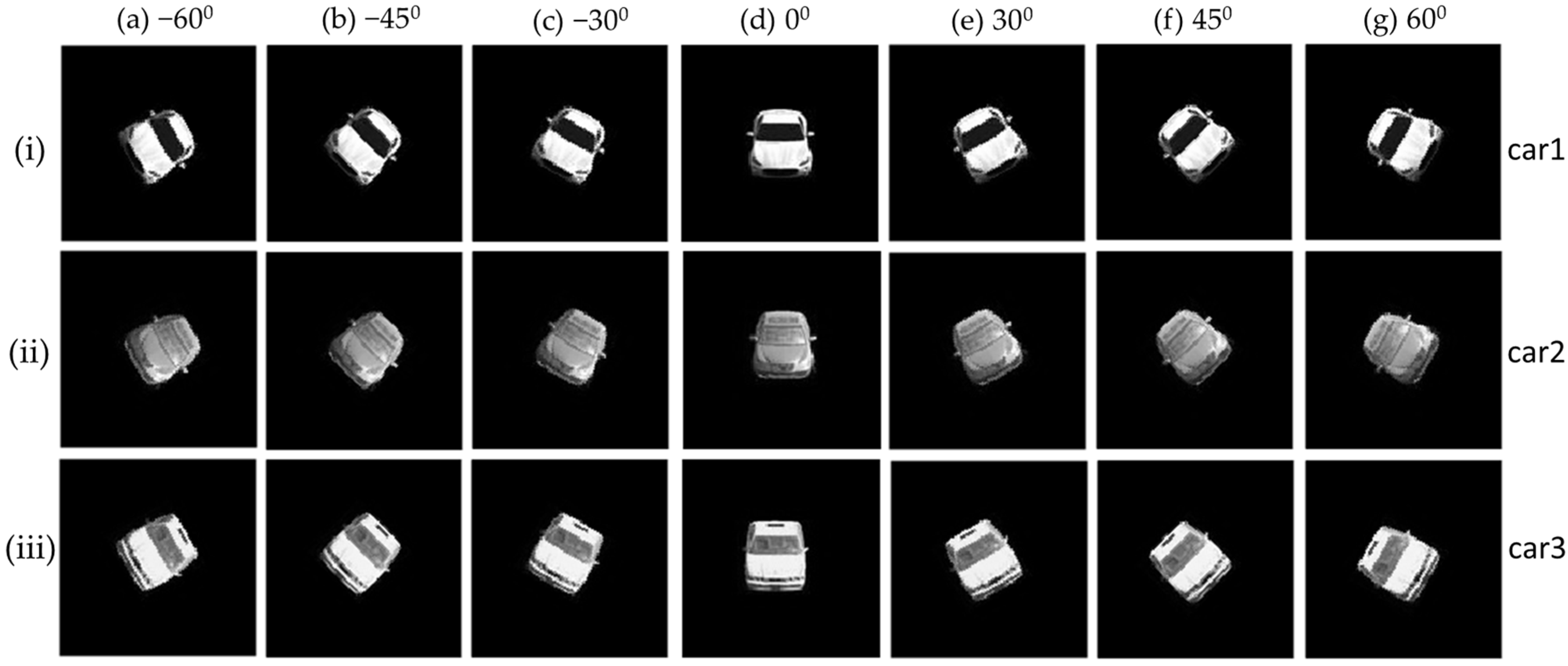

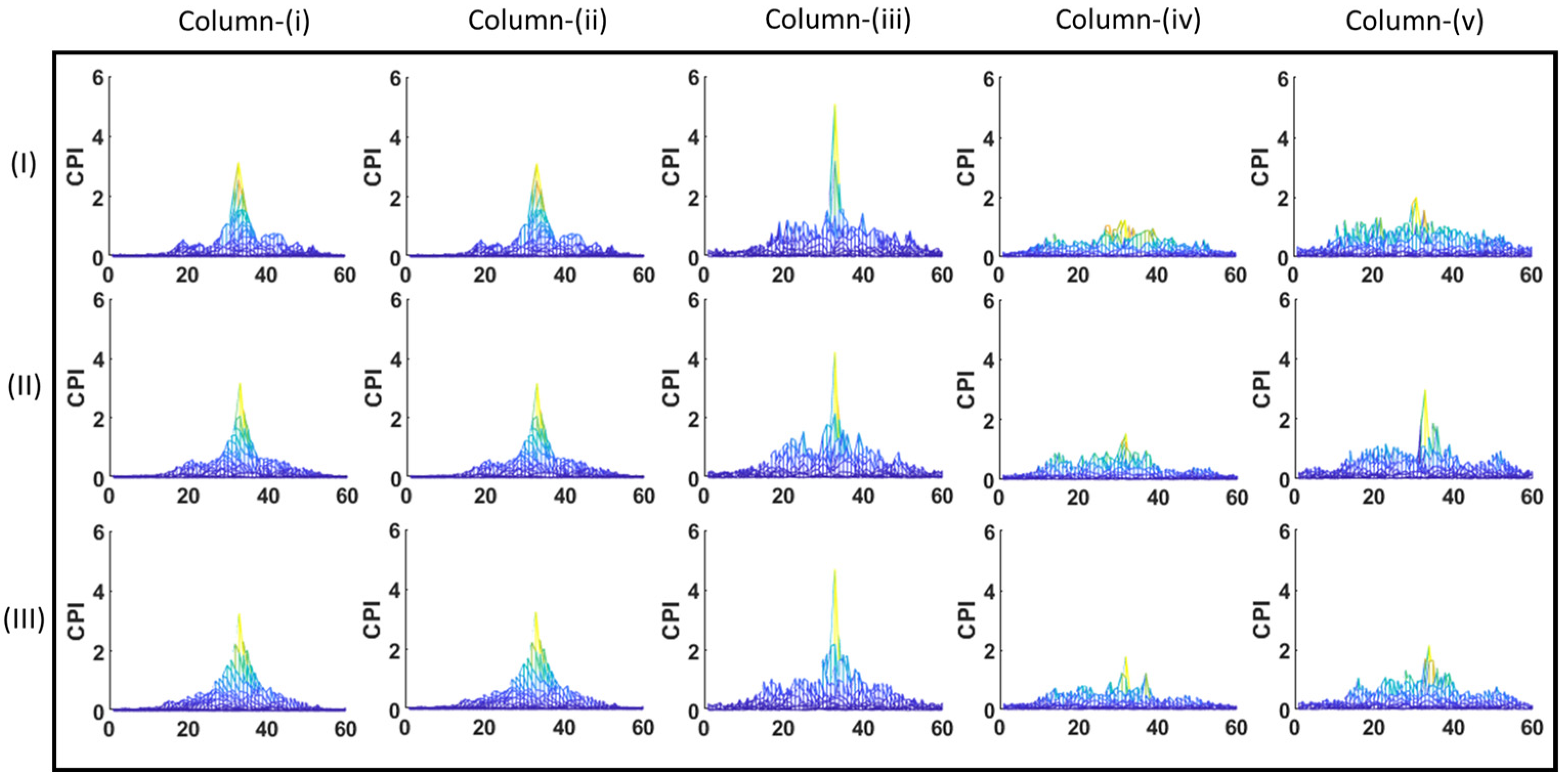

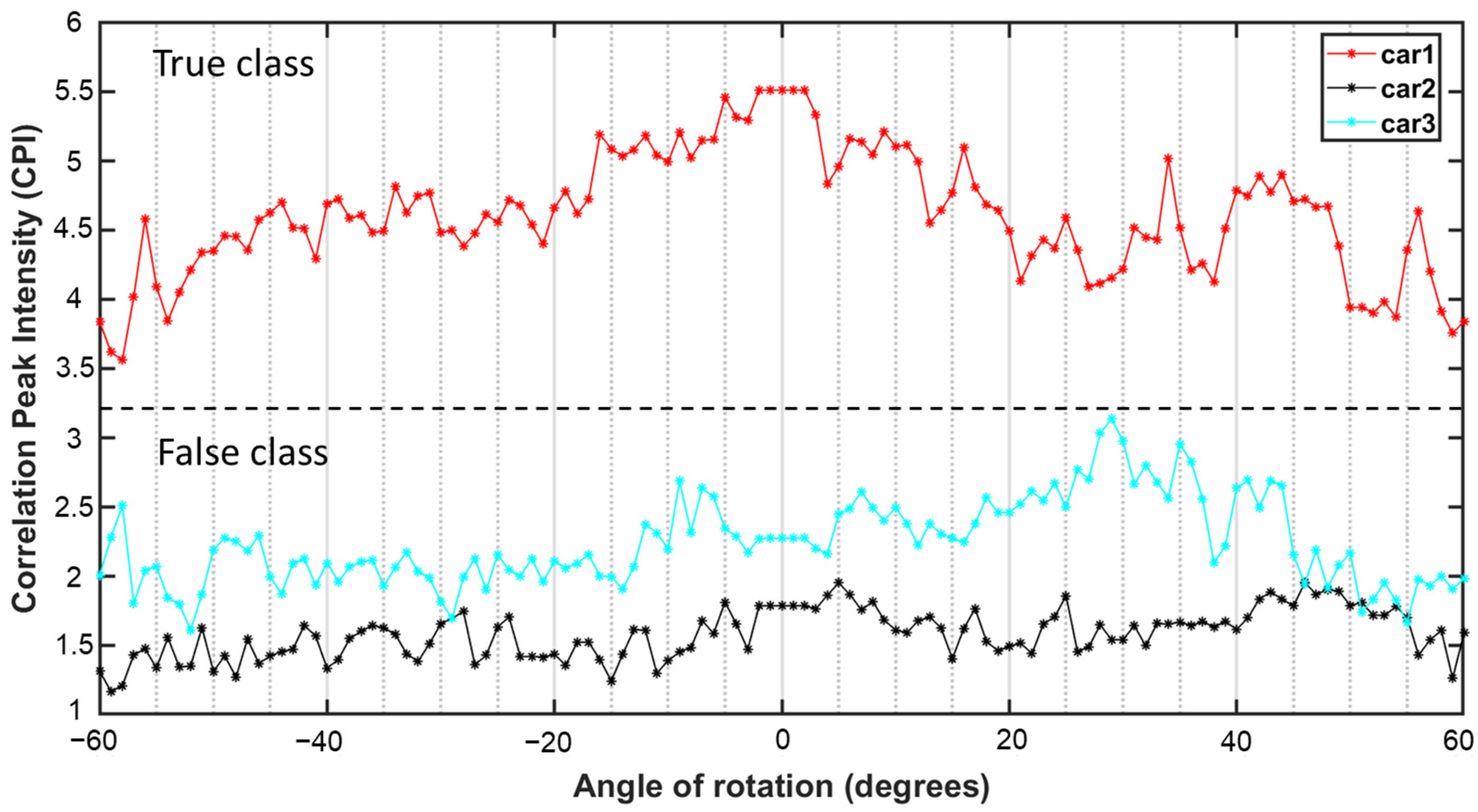
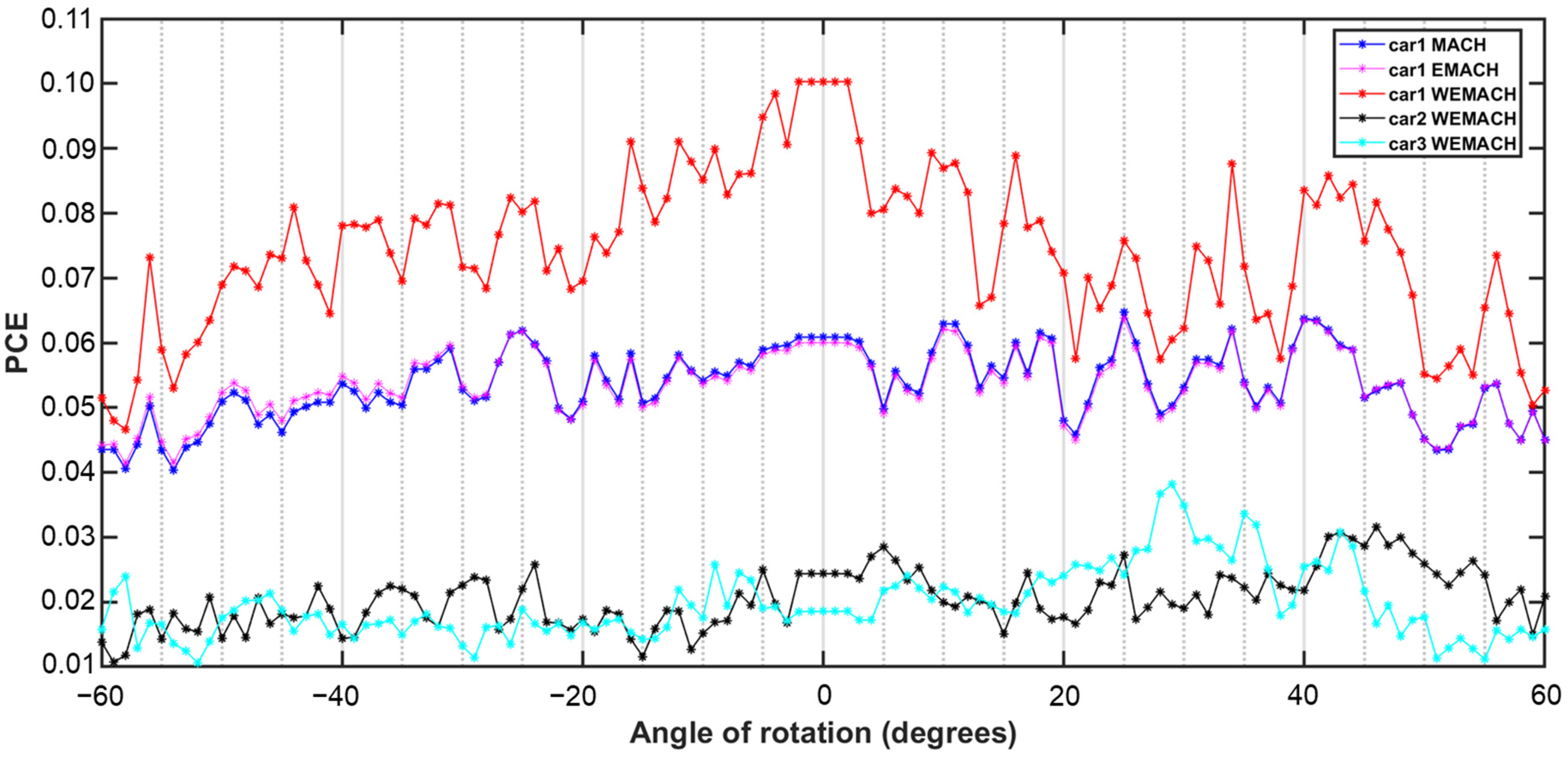



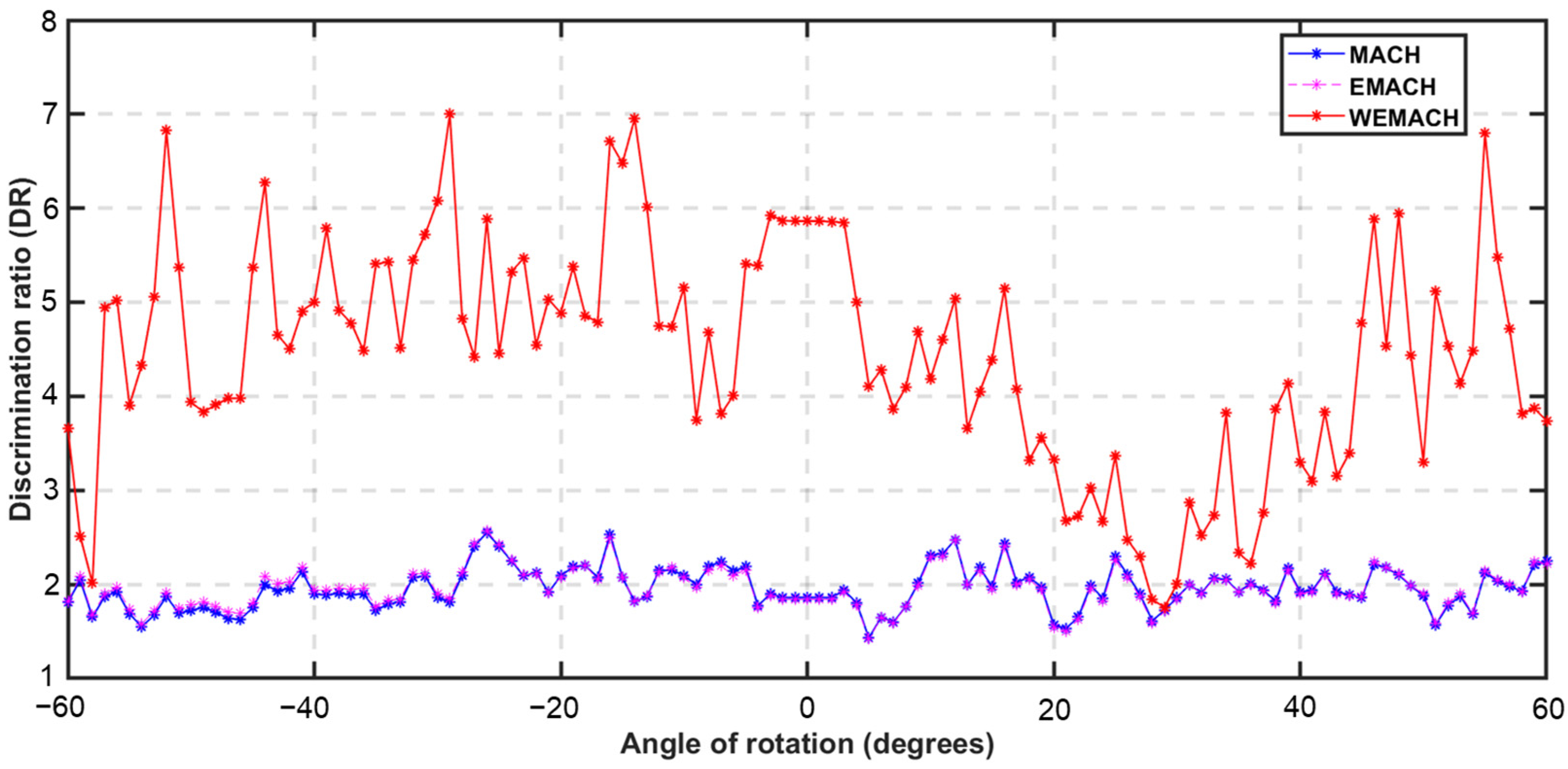
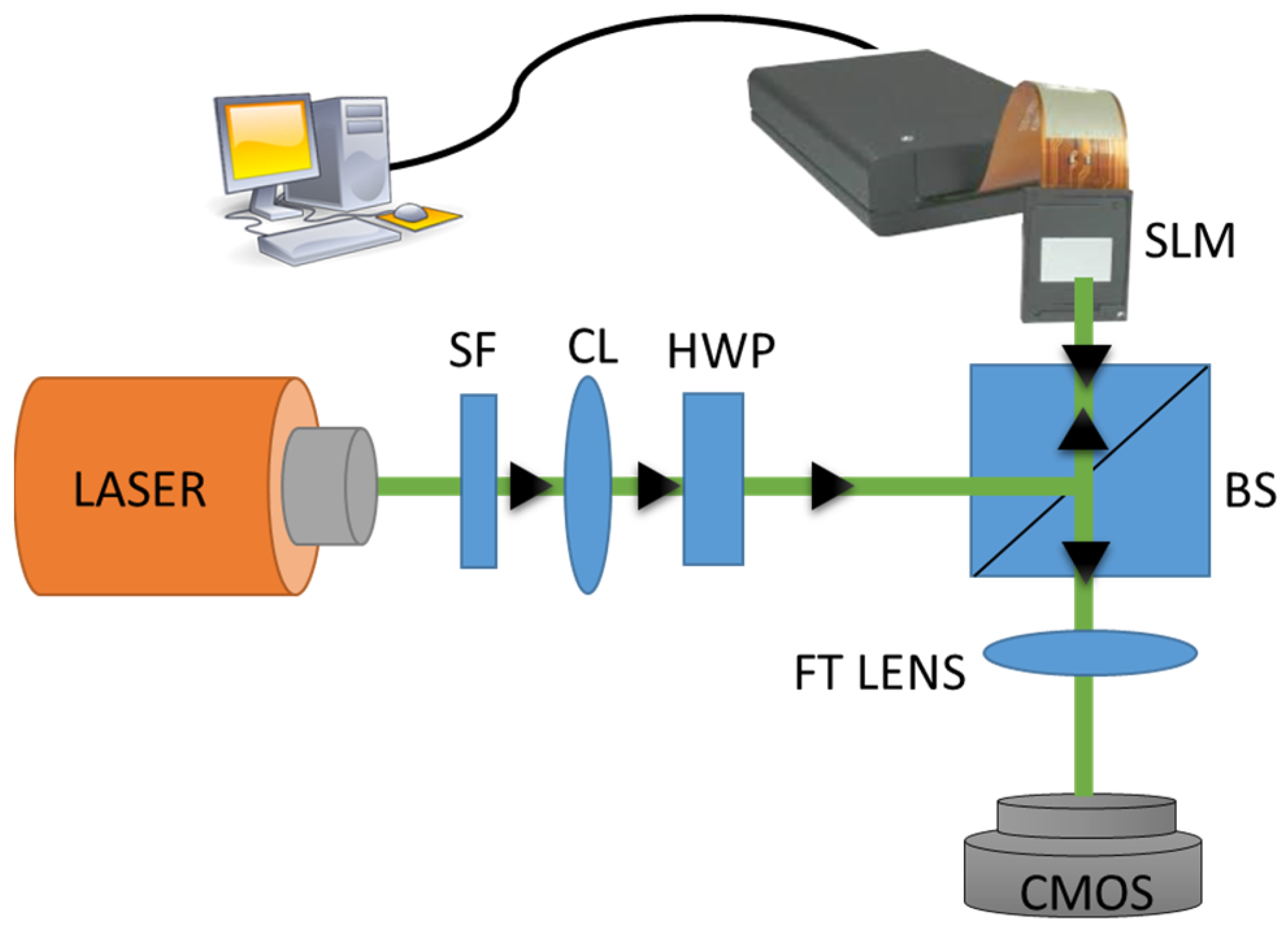

| Filter | Car1 | Car2 | Car3 |
|---|---|---|---|
| MACH | 3.225 | 1.638 | 2.313 |
| EMACH | 3.225 | 1.636 | 2.310 |
| WEMACH | 4.614 | 1.587 | 2.244 |
Disclaimer/Publisher’s Note: The statements, opinions and data contained in all publications are solely those of the individual author(s) and contributor(s) and not of MDPI and/or the editor(s). MDPI and/or the editor(s) disclaim responsibility for any injury to people or property resulting from any ideas, methods, instructions or products referred to in the content. |
© 2023 by the authors. Licensee MDPI, Basel, Switzerland. This article is an open access article distributed under the terms and conditions of the Creative Commons Attribution (CC BY) license (https://creativecommons.org/licenses/by/4.0/).
Share and Cite
Kumar, R.; Nishchal, N.K.; Alfalou, A. Improving the False Alarm Capability of the Extended Maximum Average Correlation Height Filter. Photonics 2023, 10, 1096. https://doi.org/10.3390/photonics10101096
Kumar R, Nishchal NK, Alfalou A. Improving the False Alarm Capability of the Extended Maximum Average Correlation Height Filter. Photonics. 2023; 10(10):1096. https://doi.org/10.3390/photonics10101096
Chicago/Turabian StyleKumar, Rahul, Naveen K. Nishchal, and Ayman Alfalou. 2023. "Improving the False Alarm Capability of the Extended Maximum Average Correlation Height Filter" Photonics 10, no. 10: 1096. https://doi.org/10.3390/photonics10101096
APA StyleKumar, R., Nishchal, N. K., & Alfalou, A. (2023). Improving the False Alarm Capability of the Extended Maximum Average Correlation Height Filter. Photonics, 10(10), 1096. https://doi.org/10.3390/photonics10101096





